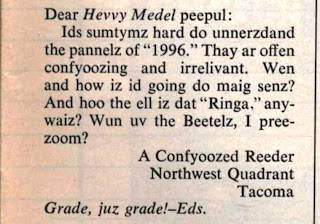Book Review: 'The Shores of Tomorrow' by David Mason
2 / 5 Stars
‘The Shores of Tomorrow’ (240 pp.) was published by Lancer Books in 1971; the striking cover illustration is by Jim Steranko.
David Mason (1924 – 1974) wrote a number of SF novels in the late 60s – early 70s, before dying at the comparatively young age of 50.
On a parallel Earth where the Civil War took place a century after it did in ‘our’ Earth, veteran Ian Kinnon is enjoying rural life with a wife and young son. As a result of the war, the America he resides in is at a 19th century level of technology. When Kinnon rides out on his horse for a early-morning deer hunt, he is thus astonished to see a dirigible-shaped spacecraft materialize on a slope overlooking his village.
To Kinnon’s horror, the spacecraft discharges a party of raiders, who descend on the village to enslave its citizens, killing any who resist. Kinnon takes command of the village militia and succeeds in defeating the invaders.
Seizing their ship, he is further astounded to discover that it moves not through space, but through dimensions filled with parallel worlds – thousands of Americas where the course of history is slightly different.
Kinnon embarks on a mission of vengeance: find the parallel Earth housing the home base of the loathsome 'Char Qua' raiders, and destroy it. But destroying the Char Qua will require the cooperation of the lords of the multiverse, the aristocratic Shimri, and the Shimri have their own reasons for not wanting a homespun man from a primitive society warring through the dimensions on his own crusade……….
‘Shores’ starts off well, generating a fast—moving narrative that credibly leverages the parallel worlds theme regularly employed in sci-fi. Unfortunately, by the mid-point of the novel author Mason devotes considerable text to the psychological intrigues between Kinnon and an alluring Shimri priestess named Nesha. The reader is treated to page after page of wooden dialogue marked by the heavy use of ellipses:
“Then…it’s true”, she said, in the same small, terrified voice. “You…do have the Powers.”
“Yes. I was…. very angry.”
“I….try not to grow too angry”, Nesha said.
The novel picks up momentum in its last 25 pages, but getting there requires some patience that I suspect many readers will not be willing to provide.
‘Shores’ is perhaps best viewed as a less adroit imitation of the many sci-fi adventure tales Michael Moorcock regularly produced during the early 70s.





























































.jpg)



















